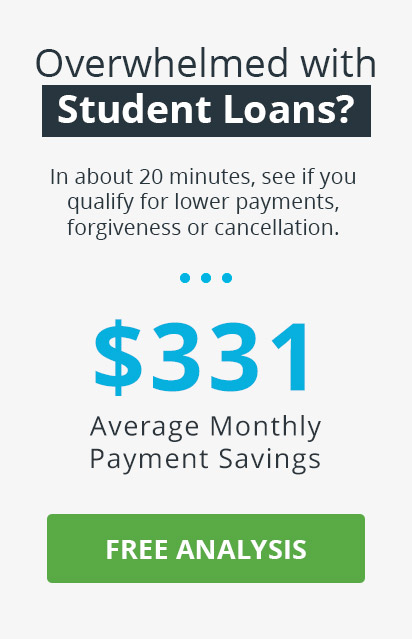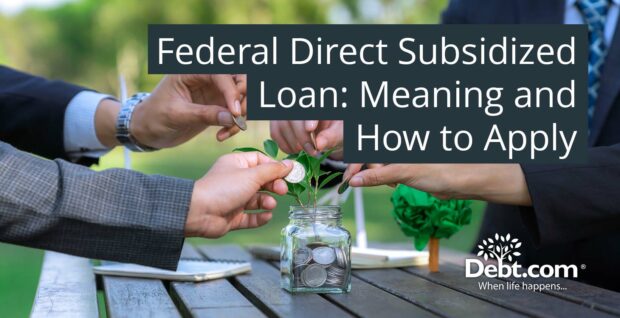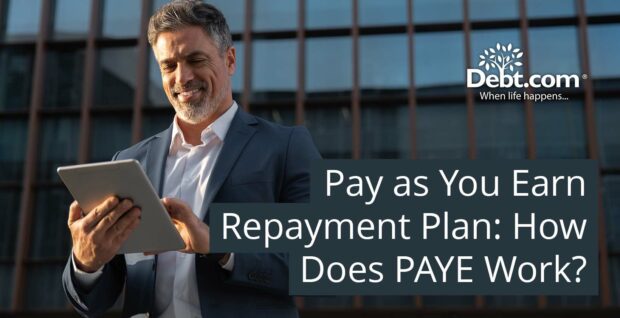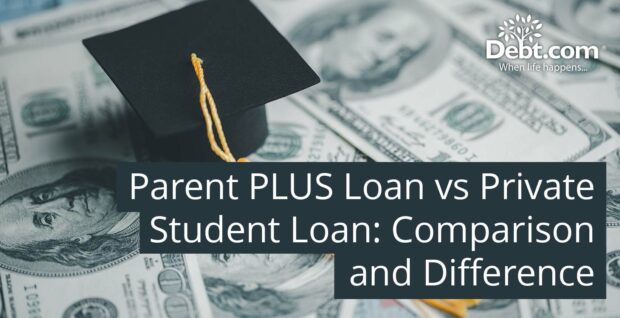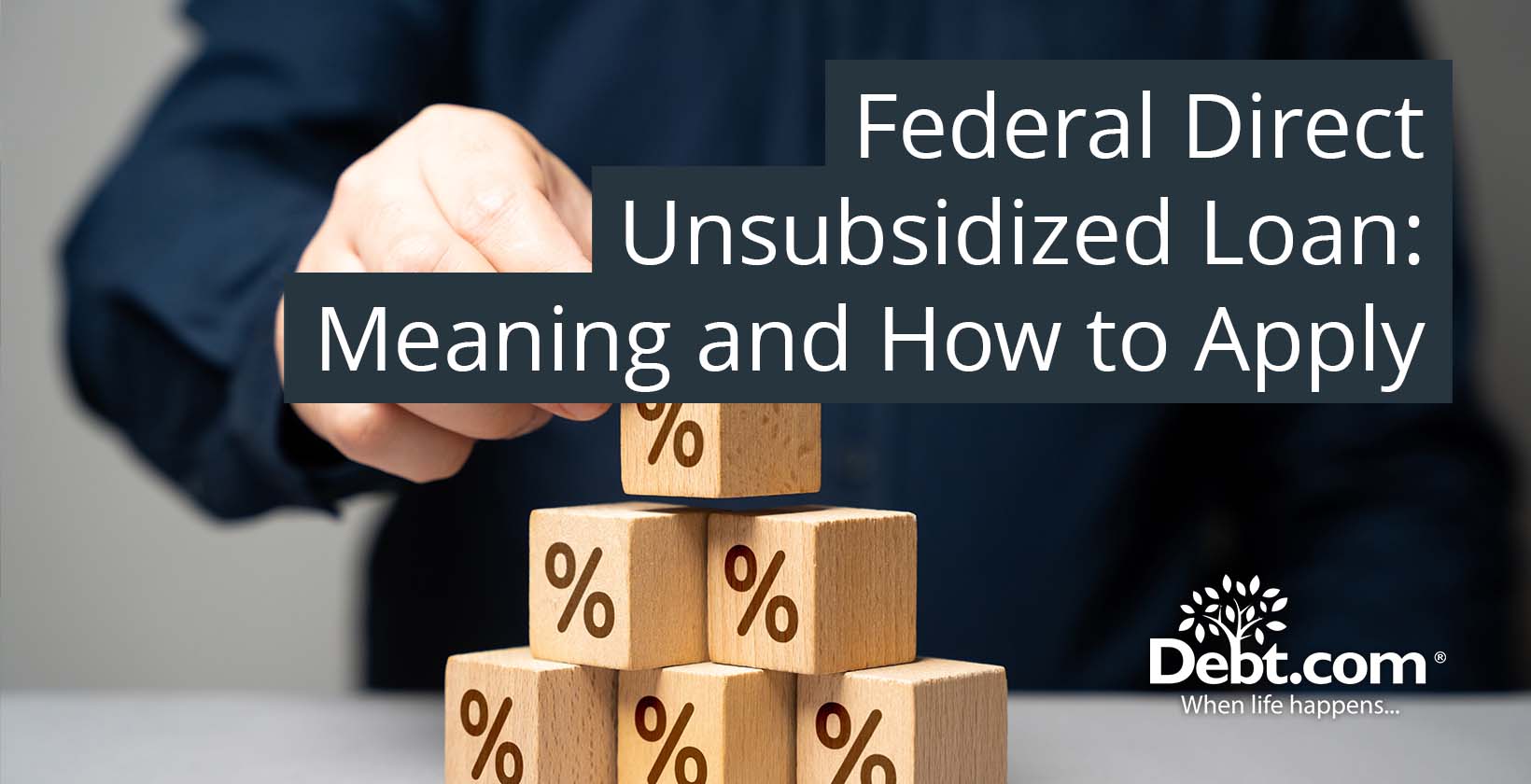
A Federal Direct Unsubsidized Loan is a type of student loan offered by the U.S. Department of Education that helps cover the cost of higher education. The direct unsubsidized loan meaning refers to a type of federal student loan where interest accrues from the time the loan is disbursed. The answer to the question ‘What is an unsubsidized loan?’ is understood as a loan for which the borrower is responsible for paying all the interest instead of subsidized loans where the government covers the interest during certain periods.
Undergraduates and graduate students apply for Direct Unsubsidized Loans regardless of financial need, unlike subsidized loans. Interest on these Direct Unsubsidized Loans begins to accrue from the time the loan funds are disbursed and continues throughout the life of the loan. Borrowers are responsible for paying all the accrued interest, which is added to the principal amount if not paid in school, during grace periods, or deferment.
Students must first complete the Free Application for Federal Student Aid (FAFSA) at fafsa.ed.gov to apply for a Federal Direct Unsubsidized Loan. The application collects financial information used to determine eligibility for federal financial aid. Students receive a Student Aid Report (SAR) that summarizes the information provided and indicates their Expected Family Contribution (EFC) after submitting the FAFSA. The school creates a financial aid package, including a Direct Unsubsidized Loan, which the student accepts through the school’s financial aid portal.
First-time borrowers must complete entrance counseling to understand their rights and responsibilities once the loan is accepted. They must sign a Master Promissory Note (MPN), a legal document that outlines the loan terms and obligates the borrower to repay the loan. The school then disburses the loan funds directly to the student’s account, applying them to tuition, fees, and other educational expenses. Any remaining funds are given to the student for different costs. Students effectively manage their educational financing and plan for repayment by understanding the application process and responsibilities associated with Direct Unsubsidized Loans.
Table of Contents
What is a Federal Direct Unsubsidized Loan?
A Federal Direct Unsubsidized Loan is a type of federal student loan offered by the U.S. Department of Education. A Federal Direct Unsubsidized Loan is available to undergraduate, graduate, and professional students to help cover the cost of higher education. Unsubsidized loans are not based on financial need, unlike subsidized loans. Students are responsible for paying the interest on these loans from when the loan is disbursed until it is paid in full.
The U.S. Department of Education oversees subsidized and unsubsidized loans through its Federal Direct Loan Program. The federal student loan directly provides students and their parents with loans to help them pay for their education after high school. The Department of Education is responsible for the administration and management of the loan program, including the distribution of loan funds, the collection of loan payments, and the provision of repayment assistance options. Federal Direct Unsubsidized Loans aim to ensure that students have access to financial resources to support their educational pursuits and manage their debt responsibly.
The term “unsubsidized” refers to the fact that the borrower is responsible for paying all the interest on the loan. The interest starts accumulating when the loan funds are disbursed and continues to accrue while the borrower is in school, during grace and deferment periods. The accrued interest is capitalized if the borrower chooses not to pay it while in school or during other periods of non-repayment. Accrued interest is added to the principal amount of the loan, increasing the total amount that needs to be repaid.
How does a Federal Direct Unsubsidized Loan Work?
Federal Direct Unsubsidized Loan works by providing financial assistance to students to cover the cost of their education, regardless of financial need. The U.S. Department of Education disburses the loan funds directly to the student’s school once a student completes the Free Application for Federal Student Aid (FAFSA) and is approved.
The school applies the funds to tuition, fees, and other educational expenses. The remaining funds are given to the student for other costs, such as books and living expenses. Interest on the loan begins to accrue as soon as the funds are disbursed. The school pays the interest or allows it to accrue while the borrower is in school, during grace periods, and deferment periods.
Unpaid interest is capitalized, increasing the total amount owed. Repayment of the principal loan amount begins after the student graduates leaves school or drops below half-time enrollment, and various repayment plans are available to accommodate different financial situations.
What is the Importance of Understanding Direct Unsubsidized Loans?
The importance of understanding Direct Unsubsidized Loans lies in their significant impact on a student’s financial planning and long-term debt management. Knowing how these loans work, including the accrual of interest from when the loan is disbursed, helps students make informed decisions about borrowing and repayment strategies.
Awareness of the responsibility to pay interest during periods of non-repayment and the potential for capitalization prevent unexpected increases in the total loan balance. Understanding the terms and conditions of Direct Unsubsidized Loans enables students to explore and utilize available repayment options and benefits, such as income-driven repayment plans and deferment opportunities. It helps avoid default and ensures a more manageable debt repayment experience after graduation.
How does a Direct Unsubsidized Loan differ from other Types of Student Loans?
A Direct Unsubsidized Loan differs from other types of student loans by not requiring the borrower to demonstrate financial need, making it accessible to a broader range of students, including undergraduate, graduate, and professional students. The government pays Direct Subsidized Loans while the student is in school at least half-time, during grace periods, and during deferment periods. Borrowers of Direct Unsubsidized Loans are responsible for all the interest that accrues when the loan is disbursed. It results in a higher loan balance if the interest is not paid while the borrower is still in school.
Direct Unsubsidized Loans are one type of student loan with higher borrowing limits than subsidized loans, providing more substantial financial support. They offer more flexible repayment options and benefits compared to private student loans, such as income-driven repayment plans and eligibility for federal forgiveness programs, making them a more attractive option for many students.
What are the differences between a Direct Unsubsidized and Subsidized Loan?
The differences between a Direct Unsubsidized and Subsidized Loan are based on eligibility criteria, interest accrual, and borrowing limits. A Direct Unsubsidized Loan and a Direct Subsidized Loan are types of federal student loans available through the U.S. Department of Education, but they have key differences that affect how interest is handled and eligibility criteria.
A Direct Subsidized Loan is awarded based on financial need, as determined by the information provided on the Free Application for Federal Student Aid (FAFSA). An essential benefit of a subsidized loan is that the government pays the student’s interest while the student is in school at least half-time. A grace period of six months follows graduation, and a deferment period is allowed. A borrower’s borrowing costs are lower during these times because it does not accrue interest.
A Direct Unsubsidized Loan does not require the borrower to demonstrate financial need, making it accessible to a broader range of students, including students in undergraduate, graduate, and professional programs. Interest on an unsubsidized loan begins to accrue when the loan funds are disbursed. Borrowers are responsible for paying all the interest that accrues, even while in school, during the grace period, and during deferment periods. The accrued interest is capitalized if the borrower chooses not to pay the interest while in school or during deferment, increasing the total amount owed.
Another key difference between unsubsidized and subsidized loans is the borrowing limits. Direct Subsidized Loans have lower annual and aggregate borrowing limits than Direct Unsubsidized Loans. Students need to rely on unsubsidized loans to cover additional educational expenses beyond what subsidized loans provide.
What are the Advantages of a Direct Unsubsidized Loan?
The Advantages of a Direct Unsubsidized Loan are listed below.
- No Financial Need Requirement: Direct Unsubsidized Loans are available to a wider range of students, including undergraduate, graduate, and professional students, regardless of financial need. It makes them accessible to more individuals seeking financial assistance for their education.
- Higher Borrowing Limits: Direct Unsubsidized Loans have higher annual and aggregate borrowing limits, unlike Direct Subsidized Loans, which allow students to borrow more money to cover their educational expenses. It is beneficial for borrowers in programs with higher tuition costs.
- Flexible Repayment Options: Borrowers of Direct Unsubsidized Loans have access to various flexible repayment plans, including income-driven repayment options. These plans adjust monthly payments based on the borrower’s income and family size, making repayment more manageable.
- Suitable for Graduate and Professional Students: Direct Unsubsidized Loans are available to graduate and professional students who are not eligible for Direct Subsidized Loans. They provide an essential source of funding for advanced education.
- Eligibility for Federal Benefits: Direct Unsubsidized Loans qualify for federal loan benefits, such as deferment, forbearance, and loan forgiveness programs. These benefits provide temporary relief and potential long-term savings for borrowers facing financial challenges.
What are the Disadvantages of a Direct Unsubsidized Loan?
The Disadvantages of a Direct Unsubsidized Loan are listed below.
- Interest Accrual from Disbursement: The primary drawback is that interest begins to accrue from the moment the loan funds are disbursed. The borrower’s total cost increases even during grace periods, deferment periods, and while the borrower is in school.
- Responsibility for Interest Payments: Borrowers are responsible for paying all the interest on the loan. Unpaid interest is capitalized if they do not pay it while in school, during grace periods, or during deferment, increasing the amount owed.
- Debt Accumulation: Borrowers end up with a higher loan balance than the original amount borrowed due to the accumulation of interest and the potential for capitalization. It leads to larger monthly payments and a longer repayment period.
- Unfavorable Terms Compared to Subsidized Loans: Direct Unsubsidized Loans offer less favorable terms since the borrower is responsible for interest from the start compared to Direct Subsidized Loans. Subsidized loans, where the government covers interest during specific periods, are more cost-effective for qualifying borrowers.
- Impact on Financial Aid Package: Taking out Direct Unsubsidized Loans impacts the financial aid package, reducing eligibility for need-based grants and scholarships that do not require repayment.
What are the Eligibility Criteria for a Direct Unsubsidized Loan?
The Eligibility Criteria for a Direct Unsubsidized Loan are listed below.’
- Student Status: Students must be enrolled at least half-time in an eligible degree or certificate program at a school participating in the Direct Loan Program.
- Requirements for Citizenship: Borrowers must be U.S. citizens or eligible non-citizens. Eligible non-citizens include permanent residents and citizens with certain visas and statuses, as federal regulations define.
- Valid Social Security Number: Applicants must have a valid Social Security Number, with few exceptions, such as students from the Freely Associated States.
- Student Progress: Students must maintain satisfactory academic progress as defined by their school. It includes maintaining a minimum GPA and completing a certain percentage of attempted courses.
- FAFSA Submission: Students must complete and submit the Free Application for Federal Student Aid (FAFSA). The form is used to determine eligibility for federal financial aid, including Direct Unsubsidized Loans.
- Student Loan Defaults: Applicants must not default on existing federal student loans and must not owe a refund on a federal grant.
- Selective Service Registration: Male students must be registered with the Selective Service, which applies to males between 18 and 25.
- Eligible Schools: Students must attend a school participating in the Direct Loan Program. Accredited post-secondary institutions in the United States participate.
How to Apply for a Federal Direct Unsubsidized Loan?
To Apply for a Federal Direct Unsubsidized Loan, follow the seven steps listed below.
- Complete the Free Application for Federal Student Aid (FAFSA) at fafsa.ed.gov. The form collects financial information about the student and their family to determine eligibility for federal financial aid, including Direct Unsubsidized Loans.
- Review the Student Aid Report (SAR). The student receives a Student Aid Report (SAR) summarizing the information provided after submitting the FAFSA. Review the report carefully to ensure all information is accurate and complete. The SAR indicates the student’s Expected Family Contribution (EFC).
- Obtain the financial aid award letter: The school uses the information from the FAFSA to create a package of financial assistance. The package, detailed in an award letter, includes information about the types and amounts of aid the student is eligible to receive, including Direct Unsubsidized Loans.
- Review the financial aid grant letter. The student must follow the school’s instructions for accepting the Direct Unsubsidized Loan if a student decides to accept it. Log into the school’s financial aid portal and accept the loan offer.
- Obtain entrance counseling. First-time borrowers of federal student loans are required to complete entrance counseling. The counseling session ensures that students understand the responsibilities and terms of the loan. Entrance counseling are completed online at the Federal Student Aid website (studentaid.gov).
- Sign the master promissory note (MPN). Students must sign a Master Promissory Note (MPN), a legal document in which they promise to repay the loan and any accrued interest and fees. The MPN outlines the terms and conditions of the loan. The MPN are signed electronically on the Federal Student Aid website.
- Disbursement of loan funds. The school disburses the loan funds once all the necessary steps have been completed. The funds are applied directly to the student’s school account to cover tuition, fees, and other education-related expenses. Any remaining funds are disbursed to the student for other costs, such as books and living expenses.
Should you Calculate a Direct Unsubsidized Loan before Applying?
Yes, you should calculate a direct unsubsidized loan before applying. Calculating a Direct Unsubsidized Loan before applying helps estimate total borrowing costs, including interest, which aids in informed decision-making and budget planning. Calculating a Direct Unsubsidized Loan allows for comparison of loan options, understanding the impact of interest accrual, and gaining awareness of total debt. The preparation helps students borrow necessary and manage their educational financing effectively, leading to better financial outcomes post-graduation.
What are the Loan Limits for Direct Unsubsidized Loans?
The loan limits for Direct Unsubsidized Loans range from $5,500 to $138,500. The loan limits for Direct Unsubsidized Loans vary based on several factors, including the student’s year in school, dependency status, and whether they are an undergraduate or graduate student. The U.S. Department of Education sets these limits to ensure that students only borrow what is necessary for their educational expenses while providing enough support to cover costs.
The loan limits differ depending on whether the student is a dependent or independent undergraduate. Dependent undergraduate students borrow up to $5,500 for their first year, $6,500 for their second year, and $7,500 for each subsequent year, with a total aggregate limit of $31,000. Independent undergraduate students, or dependent students whose parents are unable to obtain a PLUS loan, borrow up to $9,500 for their first year, $10,500 for their second year, and $12,500 for each subsequent year, with a total aggregate limit of $57,500. These limits include any Direct Subsidized Loans the student has received.
Graduate and professional students have different loan limits. They borrow up to $20,500 per year in Direct Unsubsidized Loans, with a total aggregate limit of $138,500, which includes any undergraduate loans they have received. All federal loans are unsubsidized for these students, as they are not eligible for Direct Subsidized Loans.
Several factors influence the determination of loan amounts for Direct Unsubsidized Loans. These include the cost of attendance (COA) at the student’s school, any other financial aid the student receives, and the student’s year in school. The COA includes tuition, fees, room and board, books, supplies, and other education-related expenses. The school subtracts any other financial aid from the COA to determine the maximum loan amount the student is eligible to receive.
How is the Interest Rate Determined for a Direct Unsubsidized Loan?
The interest rate for a Direct Unsubsidized Loan is determined by federal law and set by the U.S. Department of Education. Interest rate is a fixed rate, meaning it remains constant throughout the life of the loan, providing borrowers with predictability in their repayment amounts. The rate is updated annually on July 1st and is based on the yield of the 10-year Treasury note auction held in May, plus a fixed margin.
Congress establishes the fixed margin, which varies depending on whether the borrower is an undergraduate, graduate, or professional student, with lower undergraduate rates. The factors influencing the student loan interest rate include the 10-year Treasury note yield and the borrower type, ensuring the rate aligns with broader economic conditions and market rates while providing stability and clarity for financial planning.
How does Interest Build Up in Direct Unsubsidized Loans?
Interest builds up in Direct Unsubsidized Loans by accruing from the moment the loan is disbursed. The interest accumulates while the borrower is in school, during grace periods, and during any deferment periods. Borrowers who fail to pay interest as it accrues capitalize it, meaning that it is added to the principal amount of the loan. The capitalization increases the total amount owed and results in the borrower paying interest on a higher principal balance, further increasing the loan cost. Borrowers must be aware of potential late fees or collection fees if payments are missed or loans default, while Direct Unsubsidized Loans only have a few additional fees.
How are Loan Funds Allocated for Direct Unsubsidized Loans?
Loan funds are allocated for Direct Unsubsidized Loans by the U.S. Department of Education, disbursing the approved loan amount directly to the student’s school. The school first applies these funds to tuition, fees, and other mandatory charges. The school disburses the remaining amount to the student if any loan money remains after these charges are paid to cover other education-related expenses such as books, supplies, and living costs. The disbursement process occurs in at least two installments per academic year, ensuring that funds are available throughout the student’s enrollment period.
What are the Repayment Plans for a Direct Unsubsidized Loan?
The Repayment Plans for a Direct Unsubsidized Loan are listed below.
- Standard Repayment Plan: The Standard Repayment Plan has fixed monthly payments for up to 10 years. It is the quickest way to pay off the loan, resulting in the least amount of interest paid over time.
- Graduated Repayment Plan: Payments start low and increase every two years. The repayment term is up to 10 years and is suitable for borrowers who expect their income to increase over time.
- Extended Repayment Plan: Extended Repayment Plan extends the repayment period up to 25 years, with either fixed or graduated payments, available for borrowers with more than $30,000 in Direct Loan debt. The plan reduces monthly payments but increases the total interest paid.
- Income-Driven Repayment Plans: Income-Driven Repayment Plans set monthly payments based on the borrower’s income and family size, with repayment periods of 20 to 25 years. The remaining loan balance is forgiven after the repayment period. The main income-driven plans include, Revised Pay As You Earn Repayment Plan (REPAYE), Pay As You Earn Repayment Plan (PAYE), Income-Based Repayment Plan (IBR) and Income-Contingent Repayment Plan (ICR). Payments in REPAYE are 10% of discretionary income. PAYE offers 10% of discretionary income but never more than the 10-year Standard Plan amount. IBR payments are 10% or 15% of discretionary income, depending on when the loans are disbursed. ICR payments are less than 20% of discretionary income or the amount paid under a fixed 12-year repayment plan for student loans adjusted for income.
Is it a Bad Idea to Default on a Direct Unsubsidized Loan?
Yes, it is a bad idea to default on a direct unsubsidized loan due to the severe and long-lasting consequences. Defaulting damages the borrower’s credit score, making it difficult to obtain future credit, such as car loans, mortgages, or credit cards. The borrower incurs additional costs as the loan is assigned to a collection agency, which adds fees to the loan balance.
The federal government garnishes wages and withholds tax refunds to collect on the defaulted loan. Borrowers in default lose eligibility for additional federal student aid, impeding their ability to continue their education. Legal action is taken to recover the debt, resulting in court costs and legal fees. Employers check credit reports during the hiring process, and a defaulted loan negatively impacts job prospects. Borrowers in default lose access to repayment plans, deferment, forbearance, and other federal loan benefits that help manage their debt. Understanding these consequences highlights the importance of managing student loan debt responsibly and seeking assistance or alternative repayment options if financial difficulties arise.
Can you Consolidate a Federal Direct Unsubsidized Loan?
Yes, you can consolidate a federal direct unsubsidized loan. A Federal Direct Unsubsidized Loan consolidated allows borrowers to combine multiple federal student loans into a single loan, resulting in one monthly payment instead of multiple payments. Consolidating a Direct Unsubsidized Loan simplifies the repayment process and provides access to additional repayment plans and loan forgiveness programs. It extends the repayment period and increases the total interest paid over the life of the loan, while consolidation makes managing debt easier.
Direct Loan Consolidation allows for combining different types of federal student loans, including Direct Subsidized Loans, Direct PLUS Loans, Perkins Loans, and other federal loans. Simplify the repayment into one single monthly payment by consolidating these loans. Student loan consolidation benefits borrowers with loans from multiple lenders or servicers, simplifying repayment and reducing the risk of missing payments.
A Federal Direct Unsubsidized Loan is not consolidated with other types of loans, such as mortgages or private loans. Federal student loans have unique terms, protections, and benefits that are not shared with other types of debt. Attempting to combine federal student loans with private loans or other types of debt through private consolidation or refinancing results in the loss of federal benefits. It includes access to income-driven repayment plans, deferment, forbearance options, and loan forgiveness programs. Keeping them separate from other forms of debt to maintain these valuable federal protections and benefits while consolidating federal student loans is a useful strategy.
Can Direct Unsubsidized Loans be Forgiven?
Yes, Direct Unsubsidized Loans can be forgiven. Direct Unsubsidized Loans are forgiven through Public Service Loan Forgiveness (PSLF). PSLF forgives the remaining balance on direct loans after the borrower has made 120 qualifying monthly payments under a qualifying repayment plan while working full-time for a qualifying employer, such as a government or non-profit organization. Direct Unsubsidized Loans are forgiven through income-driven repayment plans, such as Income-Based Repayment (IBR), Pay As You Earn (PAYE), and Revised Pay As You Earn (REPAYE), where any remaining loan balance is forgiven after 20 or 25 years of qualifying payments. Other specific conditions, such as teacher loan forgiveness and disability discharge, apply for student loan forgiveness depending on the borrower’s situation.
What are the Best Financial Planning for a Direct Unsubsidized Loan?
The Best Financial Planning for a Direct Unsubsidized Loan are listed below.
- Understand the Terms and Conditions: Review the loan terms, including the interest rate, repayment options, and fees. Understanding these details helps in making informed decisions about borrowing and repayment.
- Borrow Necessary: Limit borrowing to the amount needed to cover essential educational expenses. Avoid taking out more than necessary to reduce the debt burden and interest costs.
- Pay Interest while in School: Paying the interest while in school prevents interest from capitalizing since Direct Unsubsidized Loans accrue when the loan is disbursed. It reduces the loan balance and the total interest paid over time.
- Create a Budget: Develop a detailed budget to track income and expenses. It helps manage funds efficiently, ensuring that loan payments are made on time and additional debt is avoided.
- Explore Repayment Plans: Familiarize various repayment plans available, such as the Standard Repayment Plan, Graduated Repayment Plan, and income-driven repayment plan. Choose a plan that best fits financial situation and goals.
- Utilize Loan Forgiveness Programs: Investigate eligibility for loan forgiveness programs, such as Public Service Loan Forgiveness (PSLF) or Teacher Loan Forgiveness, which reduce the amount owed if qualifying criteria are met.
- Seek Financial Counseling: Consider seeking advice from a financial counselor or student loan advisor. They provide personalized guidance on managing loans, exploring repayment options, and optimizing financial strategies.
- Make Extra Payments: Make extra payments towards the loan principal if finances allow. It reduces the loan balance faster and decreases the amount of interest paid over the life of the loan.
- Monitor Loan Statements: Regularly review loan statements to ensure that payments are being applied correctly and to stay informed about the loan balance and accrued interest.
- Prepare for Grace Period End: Plan for the end of the grace period by setting aside funds or adjusting the budget to accommodate the start of loan repayments. It ensures a smoother transition into the repayment phase.



